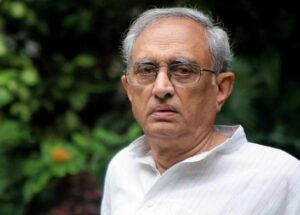M/s.Sri S.Tirumala Rao has proposed to carry out mining over an extent of 24.484 Ha to produce quartzite – 2,50,250 MTPA. at Sy.No. 127 Dalaivalasa (V & P), Garugubilli (M), Vizianagaram District
M/s.Sri Sirigudi Govinda Rao has proposed to carry out mining over an extent of 11.905 Ha. to produce quartzite – 2,51,664 MTPA. at Sy.No. 01, Gottivalasa (V & P), Garugubilli (M), Vizianagaram District
M/s.Smt.B.Asha, has proposed to carry out mining over an extent of 19.728 Ha to produce quartzite – 2,00,070 MTPA. at Sy.No.01, Vuddavolu (V & P), Garugubilli (M), Vizianagaram District
From the EIA reports accessible on the same website, I find that the information made available to the public is perfunctory and aimed at keeping them in the dark about the statutory requirements for conducting such a public hearing and the information that ought to have been made available to them, as explained below.
Hon’ble National Green Tribunal (NGT), time and again, have stressed the need for a cumulative environment impact assessment over a study area of 15km radius from the project site to assess the likely adverse impacts on the health of the people. I have enclosed here one such recent order dated 27-4-2021 of the NGT in Appeal No.46 of 2016 (SZ). None of the three EIAs referred above has any such assessment. Any public hearing conducted thus in violation of the directions of the NGT, therefore, stands vitiated.

In this connection, I may mention that there is intense mining activity going on in Garugubilli Mandal of Vizianagaram district as evident from a list of mining projects available from the attached file on Vizianagaram. For example, there are 11 mining projects in Chinagudaba village out of which one is quartz mining. In Gottivalasa, Ravivalasa and Pedagaduba villages, there is one mining project each, two of which are quartz mining projects. In Vuddavolu, there are two quartz mining projects. In addition to the cumulative air pollution they cause, the area being a part of the catchment of Nagavali River and several tanks and canals, it feeds rainwater into the river basin from which the people use water for drinking and irrigation. The local livestock also depends on water from this basin. Any EIA study that ignores this is evidently inadequate and it serves no purpose whatsoever.
The adverse health impacts of quartz mining are well documented, among others, by WHO (see attached WHO report). Quartz particles, when absorbed by people through inhalation and through water etc., are known to cause silicosis, pulmonary tuberculosis, lung cancer, autoimmune-related disease, renal disease, chronic obstructive pulmonary disease and so on. It is, therefore, all the more essential that in such cases a cumulative EIA is insisted upon. The fact that the EIA consultants who have prepared the EIA studies at great cost have not cared to carry out such an analysis shows that they are not competent to prepare such studies.
APPCB itself has issued guidelines (enclosed) on the requirements for each kind of project. For mining projects such as these three, they should not be located within 500 metres from any habitation. From what I gather, there are densely populated habitations well within that limit, which straightaway prohibits clearance for the projects from the environmental point of view. It is surprising that APPCB should schedule a public hearing knowing well that the project proposals should be rejected in the first instance.
It is clear from the above that the concerned officers of APPCB have wantonly put up these projects for public hearing at great cost to the public exchequer. It gives me the impression that they have colluded with the project proponents to hoodwink the local people into meekly supporting the project, without informing them of the likely adverse health impacts of quartz mining, the cumulative impacts of mining activity in the area, the need for a cumulative EIA study etc. The Board should have taken the public hearing process more seriously and its importance under the environmental laws.
Apparently, the concerned officers of APPCB, either as a result of their incompetence or because of outright corruption and connivance with the mining companies, have allowed these projects to come up for a public hearing. For this, the responsibility should rest on the senior officers of APPCB against whom an enquiry should be ordered immediately.
Those who hold senior positions of the APPCB should take note of the fact that they draw handsome salaries at the cost of the hapless tax-payer of the State. APPCB is a body created under the laws enacted for preventing air and water pollution and its obligation is to enforce those laws. In other words, APPCB cannot function as a rubber stamp for allowing polluting projects to be set up that violate those laws and endanger the lives of the people. I feel distressed that senior public functionaries like you should remain a silent spectator to the goings-on in the Board in the name of “pollution control”.
I am not sure whether the APPCB has ever cared to monitor the health of the people who are at the receiving end of the projects it has been callously clearing. If no such monitoring is carried out, it shows how the Board has become a willing partner in committing the offence of endangering the lives of the people.
(Text of the letter, Dr EAS Sarma has written to AK Parida, chairman, Andhra Pradesh Pollution Control Board)